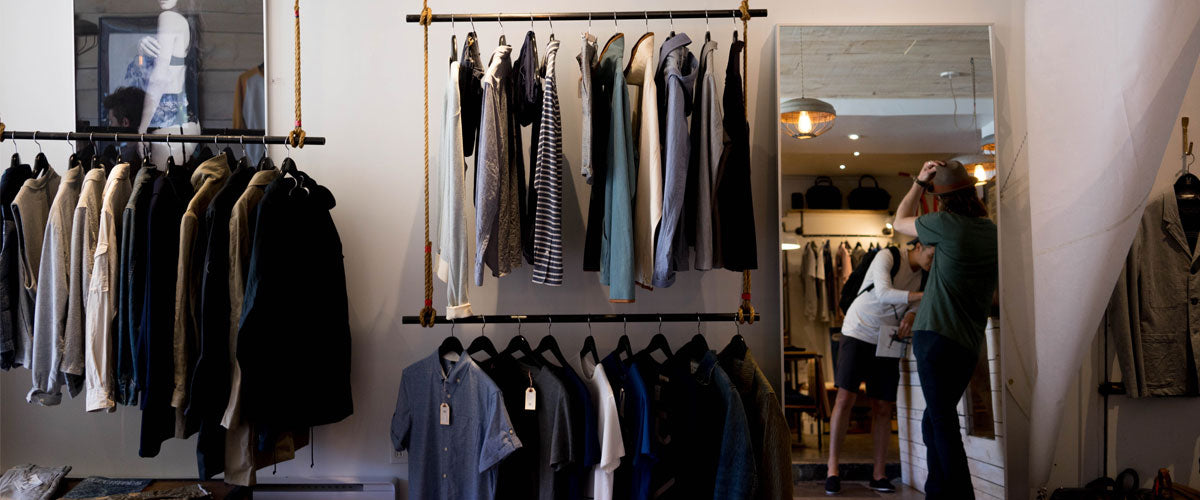

This site uses cookies for better user experience and analytics.

Begin by identifying the types of secondhand apparel you want to sell, women’s fashion, plus-size, vintage streetwear, athletic brands, or seasonal items. Study resale marketplaces like Poshmark, eBay, and Depop to see what sells well and which niches are underserved. For example, vintage outdoor gear and Y2K streetwear are trending, while certain workwear categories remain high-demand year-round.
Focus on your target buyer and competitive gaps in your platforms or region. A clear niche improves branding and speeds up sourcing decisions.
Create seller accounts on your chosen platforms and consider building your own Shopify or Squarespace store for brand control.
In the U.S., most wholesalers require a resale certificate or business license to avoid sales tax. Suppliers like NuSource will accept these documents during account setup.
Start lean by selling from your own wardrobe to learn listings, shipping, and customer service. Then reinvest profits into small wholesale orders.
Beginner-friendly packs like NuSource’s Reseller Starter Pack or brand-sorted boxes let you test categories without committing to large volumes. This reduces risk while teaching you which items move fastest.
As you grow, you can explore custom orders or pallet loads for better per-item pricing.
Maintain a clean, dry, smoke-free workspace for your stock.
Sort by size, brand, and condition to streamline listings.
When photographing items:
Detailed listings with brand, size, fabric content, and noted flaws build buyer trust—which increases conversion rates.

Research recently sold listings for accurate pricing. Use competitive but profitable rates, leaving wiggle room for offers. Include main keywords (brand + style) in the title and tags, e.g., “Free People Boho Maxi Dress Size M” instead of “Long Dress.”
Many platforms reward active sellers, list daily if possible, and use tools like Poshmark’s Offers to Likers or eBay promoted listings to boost visibility.
Clear, timely communication, accurate listings, and same/next-day shipping improve feedback scores and repeat sales.
If an order has defects or shortages, reputable suppliers like NuSource allow claims within 7 days, take photos and document issues immediately.
Once small lots sell well, scale to pallet orders or custom wholesale requests. This lowers per-item costs and increases your profit margins.
Automate tasks with cross-posting tools like Vendoo or List Perfectly, and consider part-time help for photographing or shipping orders.
Track your spend vs. sales using a simple spreadsheet or reseller bookkeeping software.

What’s a good way to test a wholesale supplier when starting out?
Begin with a small curated starter pack, such as a 15 to 60 piece mystery or brand-sorted box, to evaluate condition quality and resale demand before investing in pallets. For instance, NuSource offers beginner-friendly starter packs designed for this purpose with clear item details and moderate brand variety. By starting small, you minimize risk and learn what sells.
Do I need a resale permit to buy wholesale clothing?
Yes, many U.S. wholesale clothing suppliers require a valid resale license or permit to avoid sales tax. Sites like NuSource accept resale certificates at checkout and outline this requirement clearly, ensuring you stay compliant and lower your cost basis.
How should I price items on resale marketplaces?
Use keyword-rich titles that include brand, size, and descriptors. Check completed listings for similar items and average their sale price, then price slightly higher to allow for negotiations or offers. Include keywords in your title and use promotional tools, such as Poshmark’s offer tools or eBay discounts, to help attract buyers.
What condition categories should I expect from wholesale apparel?
Suppliers often categorize inventory as New With Tags (NWT), New Without Tags (NWOT), or gently used secondhand. Platforms like NuSource clearly label these categories and explain their condition-checked standards, so you know what to expect and can price accordingly.
How do I handle inventory defects or shipping mistakes?
Inspect your shipment immediately and sample condition. If more than a tolerated percentage (for example, over 15%) shows severe defects or if item counts are wrong, report issues promptly, usually within 5 to 7 days. NuSource’s support team handles replacements or credits when orders don’t meet condition standards.
Should I use both thrift sourcing and wholesale for inventory?
Yes, starting with thrifted or estate sale items alongside curated wholesale packs gives you variety and flexibility. Wholesale starter lots offer consistent quality and brand control, while thrifting fills gaps and adds unique pieces to your inventory.
How do I scale a resale business after initial success?
Once smaller orders sell consistently, consider ordering larger inventory, such as custom pallets or bulk boxes. NuSource supports scaling by offering pallet options, brand-sorted bulk orders, and custom sourcing tailored to your resale niche and selling platforms.
Get personalized responses to all inquiries.
Fully customizable ordering experience.
Discover a more rewarding partnership.
Feedback from other resellers like you.

Share: